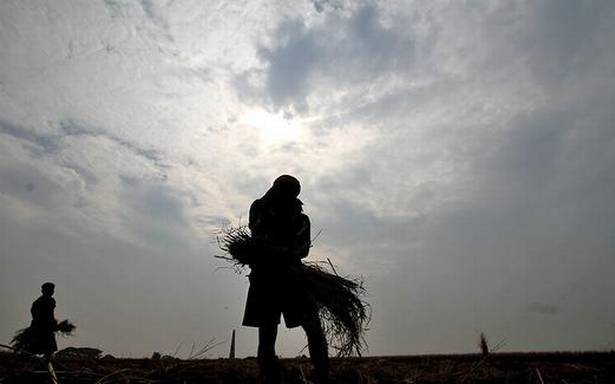
Unseasonal rainfall is expected to impact the harvesting of early paddy variety in West Bengal. Paddy harvesting (of the common kind) generally begins in the State by the end of October or early November. Harvesting of early varieties, on the other hand, begins after Durga Puja.
Due to a low-pressure system that has formed over north Telangana and a strong south-easterly wind from the Bay of Bengal, the India Meteorological Department forecast significant rainfall in West Bengal and Odisha till October 20. It should be mentioned that floods recently occurred in parts of the state's southern districts, including Howrah, Hooghly, and East Medinipur, as a result of heavy rains and overflowing rivers.
According to reports, rice fields have been flooded in numerous districts throughout the state.
"From the third week of October, the early variety of paddy begins to arrive. However, owing to the rainfall this year, there may be some delays. However, the common variety, which is harvested in the first week of November, is unlikely to be affected," said Sushil Kumar Choudhury, President of the Bengal Rice Mills Association.
There are no immediate concerns
The traditional crop of West Bengal, kharif paddy, was projected to produce more this year due to favourable weather conditions and enough rainfall during the planting period.
During the kharif season, the state produces around 11 million tons of paddy accounting for nearly 70% of the entire output, which is projected to be close to 15-16 million tons every year and roughly 14% of the country's total production.
West Bengal has 5.8 million hectares in rice production, according to official estimates. It is still too early to determine the impact of the rains on paddy output, according to Pradip Kumar Mazumder, Chief Advisor (Agriculture) to the Chief Minister.
"So far, there hasn't been much of an impact, and kharif paddy output isn't in danger." But, if the rain persists, we'll have to wait and see. "At this time, there is no urgent cause for worry," Mazumder added.
Bengal's premium fragrant rice variety, Gobindobhog, is expected to be impacted by the unseasonal rain. Farmers are having difficulty harvesting their crops since the fields are flooded. As a result, the crops are becoming larger and the quality is suffering.
According to Suraj Agarwal, CEO of Tirupati Agri Trade, the extra moisture makes the crop vulnerable to pest and insect attack.
















